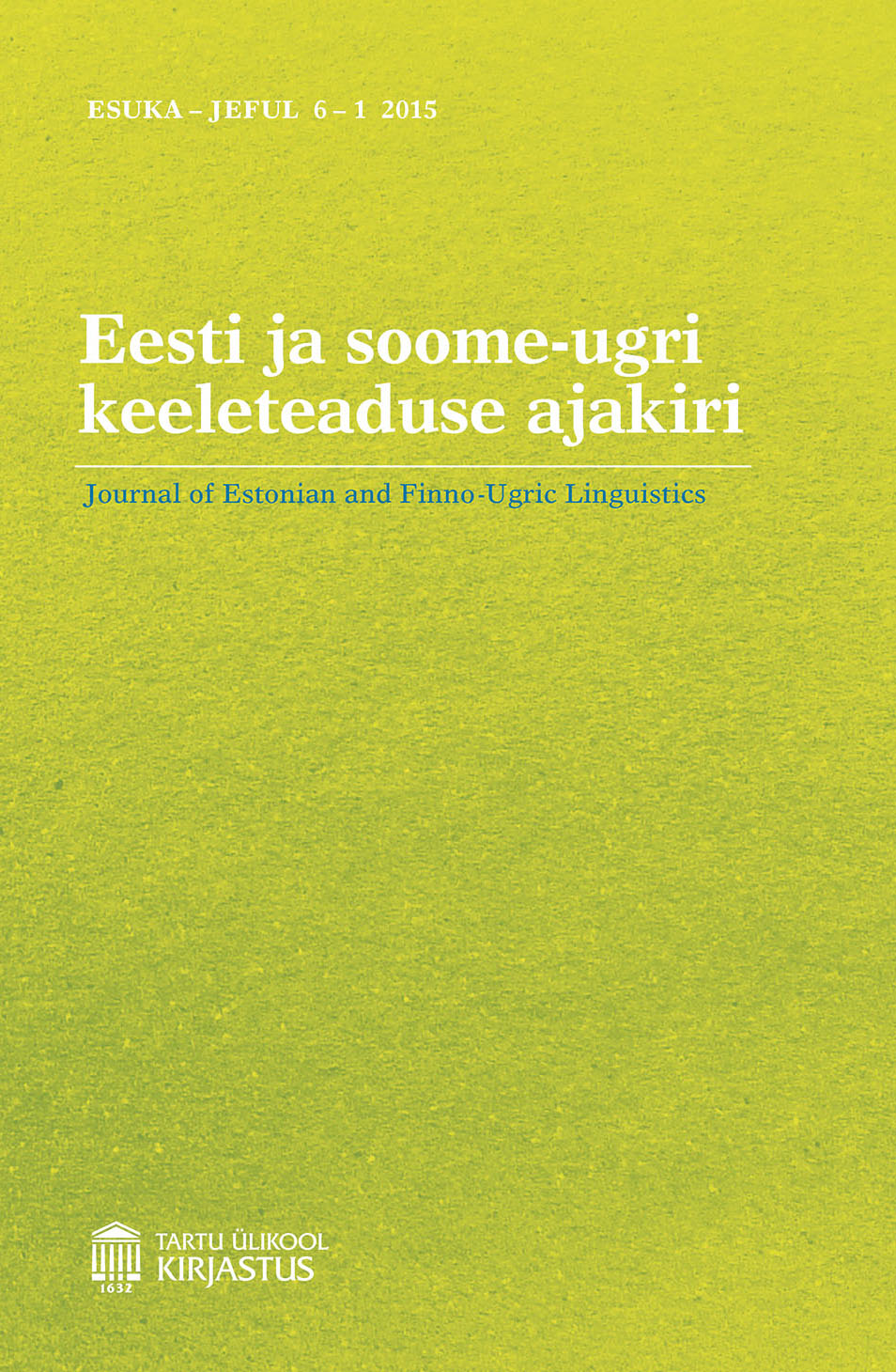Alliteration in the Kalevala and in the translation of the epic into Komi by Adolf Turkin
DOI:
https://doi.org/10.12697/jeful.2015.6.1.08Keywords:
Kalevala, alliteration, Komi language, translationAbstract
Alliteration is one of the leading stylistic features characteristic of the Kalevala. This analysis of the translation of the Kalevala into Komi by Adolf Turkin shows that alliteration is fairly frequent in the target text. Examples of alliteration and data on the occurrences of alliteration in the translation allow the suggestion that the translator may have attempted to make use of consonant words. However, alliteration observed in the translation cannot be regarded as a characteristic phonetic factor that participates in the organisation of the text. It proves to be accidental, not structural (as it is in the original text of the Kalevala). In the translation, which has 5132 lines, alliteration is observed in 1539 lines, or nearly in one-third of the translation. In the major part of the examples weak alliteration occurs; strong alliteration is fairly rare. In the text of translation, alliteration is expressed by different word-initial sounds, the overall number of which is 28 (21 consonants and 7 vowels). It is frequent in words that begin with the consonants [k], [v], [p], [m] and [s]. Among the occurrences of strong alliteration there are cases in which a syllable or the root of the word is repeated (25% in each case). The fact that the structural features of the Komi language differ from those of the Finnish literary language (and of the language of the Kalevala) explains the limitations in the translation of such a device as alliteration. From the point of view of the differences in the phonetic features it can be noted that Komi has, for example, 33 phonemes (7 vowels and 26 consonants) while in Finnish the phonemes are less numerous: 21 (8 vowels and 13 consonants). Hence, words with the same initial consonants are fewer in Komi. As far as lexis is concerned, consonant-initial words that would make pairs of synonyms (both in the literary language and dialects) are fairly rare.Downloads
Download data is not yet available.
Downloads
Published
2015-06-09
How to Cite
Rakin, N. (2015). Alliteration in the Kalevala and in the translation of the epic into Komi by Adolf Turkin. Eesti Ja Soome-Ugri Keeleteaduse Ajakiri. Journal of Estonian and Finno-Ugric Linguistics, 6(1), 139–156. https://doi.org/10.12697/jeful.2015.6.1.08


